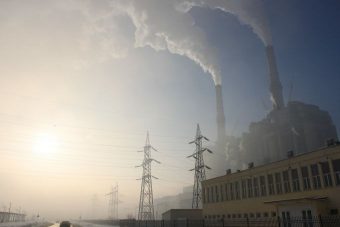
The carbon intensity of the global economy is falling faster than ever before, but the pace of change is still not enough to hit global climate targets, new research published by PwC warns today.
In 2016 the carbon intensity of the world’s economy fell 2.6 per cent, a continuation of the “step change” in the pace of decarbonisation seen since 2014.
But according to the latest Low Carbon Economy Index (LCEI), which tracks G20 countries’ efforts to reduce the carbon intensity of their economy, progress still falls well short of the 6.3 per cent rate needed to deliver emissions cut compatible with keeping temperature increases to under 2C.
Some countries actually increased the carbon intensity of their economies in 2016 – Indonesia, Argentina, Turkey and South Africa all saw emissions rise faster than their economies grew.
And although nations such as the US, Australia and Mexico did manage to cut their emissions intensity faster than the global average, only China and the UK cut their emissions in line with the two degrees goal. They reduced their emissions intensity by 7.7 per cent and 6.5 per cent respectively, mainly by cutting coal consumption and boosting energy efficiency.
“As countries prepare to discuss the process for raising the ambition of their national targets at the next round of climate talks in Bonn next week, our report emphasises the fact that the Paris Agreement will only be possible if they are serious about accelerating action,” Jonathan Grant, director of climate change at PwC and co-author of the report, said in a statement.
Emerging economies – the so-called ‘E7’ group of China, India, Brazil, Mexico, Russia and Turkey – together cut their emissions intensity at a faster rate of 4.2 per cent, while the G7 nations lagged behind with an overall emissions intensity cut of 2.9 per cent.
The widening gap between the worst and best performing countries poses a serious problem for business, Grant warned. “Companies are being encouraged by investors and others to assess the risks of two degrees scenarios,” he said. “But they’re not forecasting or planning on a two degrees outcome, because the signals from governments just aren’t there right now.”
“Despite the increase in carbon pricing regulation in countries around the world, the price signal is often too feeble to prompt significant low carbon investment,” he continued. “Many companies are now planning for a range of potential outcomes including an increase in extreme weather and other climate impacts.”
Source: businessgreen.com



